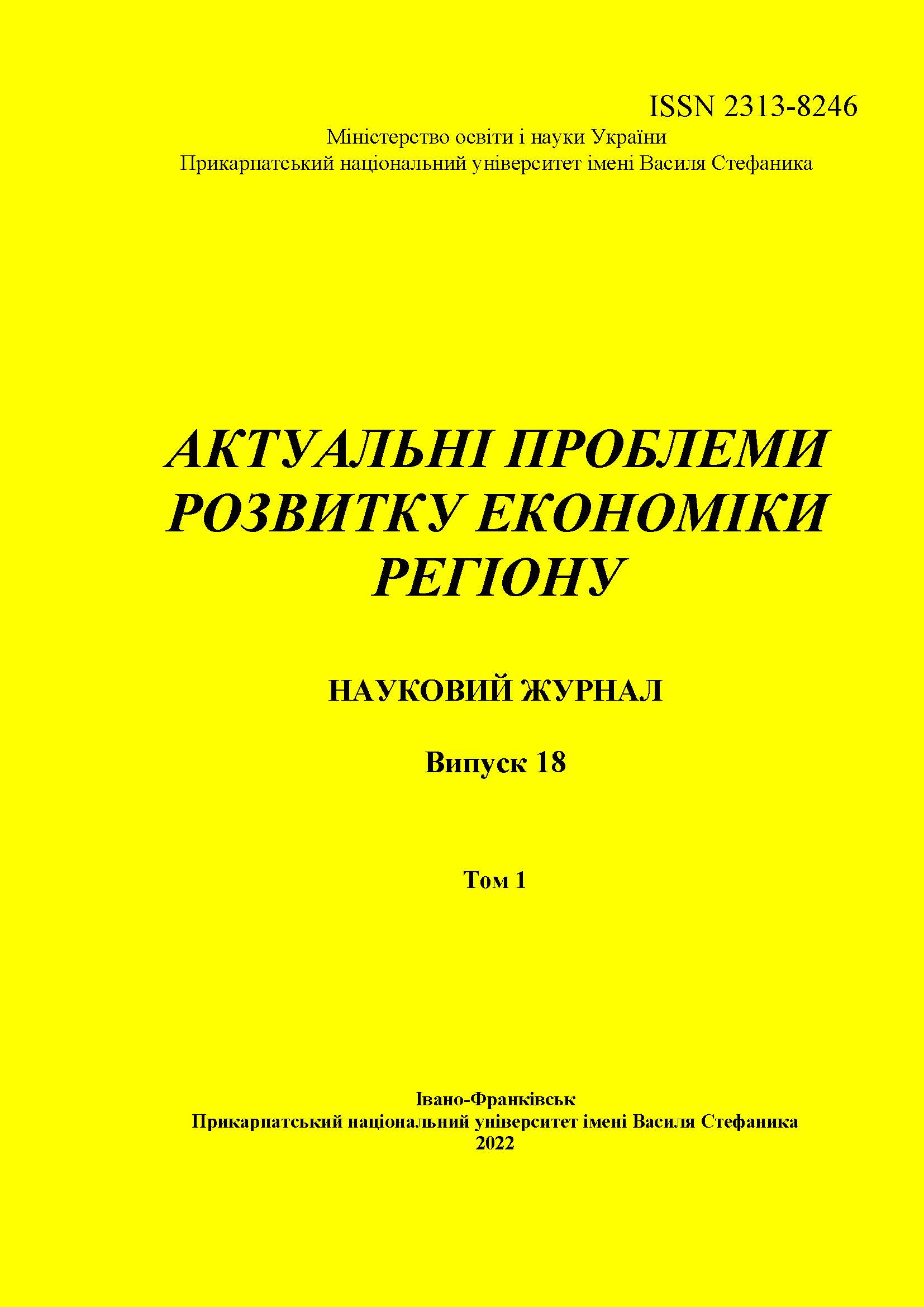BUDGETING AS A CONTROL SYSTEM IN FINANCIAL AND CREDIT ACTIVITIES
DOI:
https://doi.org/10.15330/apred.1.18.67-78Keywords:
financial and credit institutions, budgeting, budget, control, financial planning, management, principles of budgetingAbstract
The article considers budgeting as a system of control over the activities of financial institutions. Emphasis is placed on the need to introduce budgeting in the activities of financial institutions. Methodical approaches in budgeting of financial and credit institutions are considered and analyzed. The role of budgeting in the activities of financial institutions based on the functions of budget planning, organization, motivation, control and regulation is reflected. An analysis of the factors influencing the low efficiency of budgeting in the activities of financial institutions.
The main types of budget assessment depending on the purpose and methods of its implementation are studied. Emphasis is placed on the feasibility of analyzing the budget of the financial institution as a plan for future operations integrated into the technologies formed in accounting and financial planning. It was found that the basis of any budgeting of financial institutions are financial flows, financial risks, key indicators of the financial market, profits and structural components, the amount of required funds and reserves, currency position, etc.
At the heart of the budgeting system are scientifically sound principles that clearly define the nature and content of budgeting, creating conditions for effective work and reducing the possibility of negative factors, namely: the principle of unity; the principle of completeness; principle of accuracy; the principle of participation, coordination and responsibility.
The advantages and disadvantages of the main options for budgeting in financial institutions are identified. The stages and modern methods of budgeting are specified.Attention is paid to the relationship between the structural units of the financial institution for budgeting.
It is proved that budgeting is one of the most effective tools for finding internal reserves in the activities of financial institutions. Allows you to plan revenues and expenses and as a result implement the concept of "exception management". This concept is a way of organizing management, in which based on the implementation of the planning function through the budget system, further management influence, motivation and control is carried out through the implementation of the analytical function in assessing deviations from planned budget options.
References
2. Khrutsky, V.E., Sizova, T.V., and V.V. Gamayunov. Intracompany budgeting: a handbook for delivering financial planning. Moscow, Finance and statistics, 2004.
3. Primostka, LO Financial management in the bank, 2nd ed., Кyiv, КНЕУ, 2004.
4. Melnyk, O.G. “Classification and assignment of enterprise budgets.” Bulletin of the National University "Lviv Polytechnic", no. 484, 2003, pp. 312-319.
5. Kuzmin, O.E., and O.G. Melnik. “Building budgets in the organization.” Finance of Ukraine, no. 7, 2005, pp. 136 -146.
6. Sysoev, O.V. “Problems of budgeting the banking process.” Bulletin of the National Bank of Ukraine, no.1, 2003, pp. 52-53.
7. Partin, G.O. “Budgeting as a tool to increase the efficiency of the bank.” Problems and prospects for the development of the banking system: col. Science. work, vol. 18, 2006, pp. 100 -102.
8. Partin, G.O. “Organization and methods of activity budgeting.” Socio-economic research in transition. European integration course of Ukraine: financial dimension, issue. 3 (LIX), part 2, 2006, pp. 59 - 65.
9. Ovdiy, Yu.L. “Accounting for budget execution in the bank.” Bulletin of the NBU, no. 8, 2005, pp. 36 - 39.
10. Ovdiy, Yu.L. “Organizational support of the budgeting process in the bank.” Bulletin of the NBU, no. 11, 2005, pp. 57 - 59.
11. Dicky, T. Business budgeting. The ABC of Entrepreneurship.Practical advice on how to achieve financial success. St. Petersburg, Polygon, 1999.
12. Ptitsyn, D. “Crib for the manager.” Galician contracts, no. 13, 2003, pp. 40-43.
13. Eskov, A.L. and E.T. Demina. “Budgeting as a management tool for a large industrial enterprise.” Bulletin of economic science of Ukraine, no. 1 (11), 2007, pp. 39 - 42.
14. Hilton, Ronald W. Managerial Accounting. New York, McGraw-Hill, Inc., 1991.
15. Wood, T., & Aronczyk, M. “Publicity and Transparency.” American Behavioral Scientist, no.64(11), 2020, pp. 1531-1544. doi.org/10.1177/0002764220945359
16. Open Budget Survey 2019 (7th edition). International Budget Partnership, www.internationalbudget.org/sites/default/files/2020-04/2019_Report_EN.pdf/ Accessed 10 Apr. 2022.
17. Kolhanova, P. (2021). DoZorro has launched a free workout with BI ProZorro. Prozorro, infobox.prozorro.org/articles/dozorro-zapustiv-bezkoshtovni-trenuvannya-z-bi-prozorro. Accessed 10 Apr. 2022.
Downloads
Published
How to Cite
Issue
Section
License
- Authors retain copyright and grant the journal right of first publication with the work simultaneously licensed under a Creative Commons Attribution NonCommercial NoDerivs 4.0 Unported License that allows others to share the work with an acknowledgement of the work's authorship and initial publication in this journal.
- Authors are able to enter into separate, additional contractual arrangements for the non-exclusive distribution of the journal's published version of the work (e.g., post it to an institutional repository or publish it in a book), with an acknowledgement of its initial publication in this journal.
- Authors are permitted and encouraged to post their work online (e.g., in institutional repositories or on their website) prior to and during the submission process, as it can lead to productive exchanges, as well as earlier and greater citation of published work (See The Effect of Open Access)


